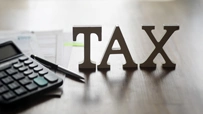How to File ITR-1 Online: A Step-by-Step Guide
Disclaimer: Ujjivan Small Finance Bank does not offer personal finance advice or products. This blog is written for generic information only.
July 05, 2025

Income Tax Return – 1 (ITR-1), also known as Sahaj (meaning "easy" in Hindi), is the simplest income tax return form for individual taxpayers in India. It is designed for residents with basic income sources like salary, one house property, and interest income. In this guide, we will explain how to file ITR-1 for Assessment Year (AY) 2025-26 (i.e. for income earned between April 1, 2024 and March 31, 2025.
We’ll cover who should use ITR-1, documents you need, a step-by-step filing process, important deadlines, and tips for first-time filers. The aim is to keep it comprehensive yet easy to understand, so even if you are a first-time taxpayer, you can confidently e-file your ITR-1 Sahaj.
What is ITR-1 (Sahaj)?
ITR-1 (Sahaj) is an income tax return form applicable to individual taxpayers with relatively simple and straightforward incomes. The Income Tax Department labels it "Sahaj" (meaning "easy") because it is meant to be easy to file compared to other ITR forms. This form is meant only for resident individuals (not for companies or firms) whose total income is up to a certain limit and comes from specified sources.
If you qualify to use ITR-1, you can report your income and deductions in this single form and fulfil your annual tax filing requirement. It is a simplified one-page form (organized into parts and schedules) that covers basic personal details, income details, deductions, and tax computation.
For AY 2025-26, the government has introduced some changes in ITR-1 to broaden its scope slightly.
Notably, certain small capital gains can now be reported in ITR-1 (more on this below), which was not allowed earlier. Overall, ITR-1 remains the go-to form for most salaried individuals and pensioners with no complex income.
Who is Eligible to File ITR-1?
You can file ITR-1 for AY 2025-26 if all of the following conditions apply to you:
In summary, resident individuals with income from salary, one house property, interest or dividends, small agricultural income, and possibly a small equity gain, with total income ≤ ₹50 lakh, can file ITR-1. This covers most salaried employees, retirees, and simple income cases.
Step-by-Step Guide to File ITR-1 Online
Filing your ITR-1 online on the Income Tax e-filing portal is a straightforward process. Here is a step-by-step guide for AY 2025-26:
Step 1: Log in to the Income Tax e-Filing Portal
Visit the Income Tax e-filing website and log in with your User ID (PAN) and password. If you are a first-time filer, you’ll need to register first by clicking "Register" and creating an account using your PAN. Ensure you have access to the registered mobile/email for OTPs during login if multi-factor authentication is enabled.
Step 2: Go to “File Income Tax Return”
After logging in, you will see your Dashboard. Navigate to the menu option e-File > Income Tax Returns > File Income Tax Return. This will start the ITR filing process.
Step 3: Select Assessment Year and Mode of Filing
You’ll be prompted to select the Assessment Year. Choose "2025-26" as the assessment year (since we are filing for FY 2024-25). Also select the mode of filing as "Online" (online is recommended for most individual filers). Proceed by clicking Continue
Step 4: Start a New Filing
If you have a saved draft of a return, the portal might show an option to “Resume Filing” for that AY. Otherwise, click on “Start New Filing” to begin a fresh ITR.
Step 5: Select Your Status
The next step asks for your filing status – choose Individual (since ITR-1 is only for individual taxpayers). You may also need to confirm whether you are filing as self or as a representative (most people file as self). Click Continue after selecting the appropriate status.
Step 6: Choose ITR Form (ITR-1)
The portal will list the ITR forms available based on your status. Select ITR-1 (Sahaj) from the list and click Proceed
Step 7: Select Reason for Filing (If Applicable)
You may be asked why you are filing the return – this is a standard question if your income is below the basic exemption limit. Common reasons include: "Income is above basic exemption limit," "I want to claim a refund," or if you meet any special conditions (like spending over a certain amount on electricity, foreign travel, etc.). Tick the relevant reason(s) – for most, it will be because your income exceeds ₹2.5L or you have a refund due – and click Continue.
Step 8: Choose Tax Regime (Old vs New)
Now you will enter the form interface. **For AY 2025-26, the New Tax Regime is the default regime by law. This means the form will initially assume you are filing under the new tax regime (which has lower tax rates but no common deductions). There will be a question like “Do you want to opt out of the New Tax Regime?” in the Personal Information section. By default, it is set to “No” (meaning you are staying in new regime). If you prefer to use the Old Tax Regime (to claim deductions like 80C, HRA, etc.), select the option “Yes” to opt out of new regime. Once you do this, the form will enable all the deduction fields for you to fill. (If you remain in new regime, many deduction fields will stay disabled, as new regime taxpayers cannot claim them.) Choose carefully – if you’re unsure, you might want to compare tax under both regimes.
Step 9: Fill in Personal and General Information
The ITR form is divided into sections. The first is usually Part A: General Information, which will have your personal details. Much of this is pre-filled from your profile (like your Name, PAN, Date of Birth, Aadhaar, Address, Email, Mobile, etc.). Verify each field for accuracy.
Also select/verify your Nature of Employment (whether you are salaried in Govt/PSU/Private, pensioner, etc.) – this is mandatory to fill correctly. After reviewing and confirming all info in this section, click Confirm/Save.
Step 10: Enter Details
Your income details are generally auto or pre-filled. Verify the details before proceeding. If not, add/edit details manually as per instructions. As you fill these sections, the form will keep a running calculation of your Gross Total Income (which is the sum of all heads of income). Use the Save/Confirm feature on each section to validate entries.
Step 11: Enter Deductions (Part C – Deductions and Taxable Income)
After inputting all income, you will declare your deductions under Chapter VI-A. This section is where you claim tax-saving investments or eligible expenditures: If you remained in New Tax Regime, note that most deductions are not available. In new regime, you cannot claim 80C, 80D, HRA, etc., except a few like employer’s NPS contribution (80CCD(2)) which is allowed even in new regime.
The form will total up all deductions and subtract them from Gross Total Income to compute your Taxable Income (Part C). This is the income on which tax will be calculated. Confirm that this matches your expectations (you can roughly cross-verify with your own calculation from Form 16 and other income).
Step 12: Tax Calculation (Part D – Tax Computation)
Once incomes and deductions are filled, the portal will automatically calculate your tax liability based on the taxable income and the tax regime chosen. It will apply the relevant tax slab rates, add any cess (4% health & education cess), and determine the total tax payable. You will see a summary of Tax Computation – review it.
Step 13: Pay Tax if Required
If the tax computation shows that you have a tax amount payable (this can happen if your TDS was insufficient or some income had no TDS), the portal will prompt you with options to “Pay Now” or “Pay Later” for the remaining tax. It’s highly recommended to pay any due tax immediately (Pay Now) before submitting the return. The portal will take you to the e-Pay Tax facility where you can pay the balance tax online (via net banking, debit card, UPI, etc.). Once paid, you’ll get a BSR code and challan number which might be auto-captured in the return. If you choose “Pay Later,” you can file the return with outstanding tax, but note that your return will be treated as defective until the tax is paid, and interest may accrue. It’s better to clear dues and then continue.
Step 14: Preview Your Return
Now you’re almost done. The portal will allow you to preview your filled ITR form in a read-only format. Go through all the details one final time – personal info, incomes, deductions, tax figures – to ensure nothing is omitted or misreported. This is basically your return summary. If you spot any mistakes, you can go back to the respective section and correct them. If everything looks good, you will need to agree to a declaration (a checkbox confirming that you have provided true information) on the Preview pageincometax.gov.in. Tick the declaration box and click “Proceed to Validation”.
Step 15: Validate and Submit the ITR
The system will now run a validation check on your filled return (to catch any obvious errors, like missing required info). If there are errors, it will show a list of issues for you to fix (for example, a mandatory field left blank). You must correct those and come back to validate again. If no errors are found, you can then Submit your ITR. Click on “Proceed to Verification” to finish filing. Congratulations – your ITR is now filed, but not yet complete! The final step is verification.
Step 16: Verify Your ITR (e-Verification)
After submitting, you will be taken to the Verification step. It is mandatory to verify your income tax return, otherwise it will be treated as not filed. On the “Complete your Verification” page, choose how you want to verify. The fastest and easiest is e-Verification, which can be done via Aadhaar OTP, net banking, bank ATM/DEMAT OTP, etc.
Step 17: Acknowledgement
Once you e-verify, the process is complete. You will see a success message and can download the Acknowledgement (ITR-V) for your records. The Income Tax Department will also send a confirmation to your registered email and mobile. Keep the acknowledgement safely. You have now successfully filed and verified your ITR-1 Sahaj for AY 2025-26!
Throughout the process, if you get confused, the portal has info icons and FAQs. Take your time to fill carefully. Remember, you can save a draft and logout anytime and resume later (just make sure to submit by the due date).
Who Cannot File ITR-1?
If any of the following conditions describe your situation, you are not allowed to use ITR-1 (and would need to file ITR-2 or another applicable form):
Note: The above list covers common disqualifications for ITR-1 (Sahaj). If any of these conditions apply, you’ll need to choose an alternative ITR form (ITR-2, ITR-3, etc., as appropriate). For instance, a freelancer with business income must use ITR-3, and a landlord with two rental properties should use ITR-2. The Income Tax Department also provides a “Help me decide which ITR form to file” tool if you are unsure.
Important Deadlines and Penalties
Filing your return on time is crucial to avoid penalties and other inconveniences. Here are the key deadlines for AY 2025-26 (FY 2024-25) and the consequences of missing them:
Tips for an Easy ITR-1 Filing Experience
Filing your ITR can seem daunting if it’s your first time, but here are some quick tips and best practices to make the ITR-1 filing experience smooth and error-free:
Final Thoughts
Filing your income tax return is an important annual responsibility for every earning individual. The ITR-1 (Sahaj) form simplifies this task for taxpayers with basic incomes, and with the online e-filing platform, it has become quite convenient. By understanding the eligibility, gathering your documents, and following the step-by-step process, you can file your ITR-1 confidently on your own. Assessment Year 2025-26 brings a few changes like the inclusion of small capital gains and the default new tax regime, but the essence of ITR-1 remains the same – it's a straightforward return meant to encourage compliance with minimal hassle.
Enjoy easy banking with Ujjivan Small Finance Bank. Save more with our high-interest Savings Account and Deposit products. Need cash for your business or personal needs? Apply for MSME Loans or Micro Loans with us – we offer competitive rates and quick disbursal. We also offer vehicle loans and home loans tailored for your unique requirements. Experience a smooth banking journey with Ujjivan SFB!
Disclaimer:
The contents herein are only for informational purposes and generic in nature. The content does not amount to an offer, invitation or solicitation of any kind to buy or sell, and are not intended to create any legal rights or obligations. This information is subject to updation, completion, amendment and verification without notice. The contents herein are also subject to other product-specific terms and conditions, as well as any applicable third-party terms and conditions, for which Ujjivan Small Finance Bank assumes no responsibility or liability.
Nothing contained herein is intended to constitute financial, investment, legal, tax, or any other professional advice or opinion. Please obtain professional advice before making investment or any other decisions. Any investment decisions that may be made by the you shall be at your own sole discretion, independent analysis and evaluation of the risks involved. The use of any information set out in this document is entirely at the user’s own risk. Ujjivan Small Finance Bank Limited makes no representation or warranty, express or implied, as to the accuracy and completeness for any information herein. The Bank disclaims any and all liability for any loss or damage (direct, indirect, consequential, or otherwise) incurred by you due to use of or due to investment, product application decisions made by you on the basis of the contents herein. While the information is prepared in good faith from sources deemed reliable (including public sources), the Bank disclaims any liability with respect to accuracy of information or any error or omission or any loss or damage incurred by anyone in reliance on the contents herein, in any manner whatsoever.
To know more about Ujjivan Small Finance Bank Products Visit:"https://www.ujjivansfb.in"
All intellectual property rights, including copyrights, trademarks, and other proprietary rights, pertaining to the content and materials displayed herein, belong
to Ujjivan Small Finance Bank Limited or its licensors. Unauthorised use or misuse of any intellectual property, or other content displayed herein is strictly prohibited and the same is not intended for distribution to, or use by, any person in any jurisdiction where such distribution or use would (by reason of that person’s nationality, residence or otherwise) be contrary to law or registration or would subject Ujjivan Small Finance Bank Limited or its affiliates to any licensing or registration requirements.
FAQs
1. Who should file ITR-1 Sahaj and who cannot?
ITR-1 is meant for resident individuals with total income ≤ ₹50 lakh from salary, one house property, other sources (interest, etc.), and small agricultural income (up to ₹5,000). It also allows long-term equity capital gains up to ₹1.25 lakh from AY 2025-26. You cannot file ITR-1 if you have more complex incomes like business/professional income, more than one house, capital gains beyond the small limit, foreign income or assets, or if you are an NRI/ RNOR. Directors in companies and those holding unlisted shares are also not eligible – they should use ITR-2 or ITR-3 as applicable. In short, if your income sources are simple and specified, ITR-1 is for you; otherwise, choose a different ITR form.
2. Is it mandatory to file ITR-1 even if my income is below the taxable limit?
If your gross total income (before deductions) is below the basic exemption limit (₹2.5 lakh for under-60 individuals in old regime), you are generally not obligated to file an ITR. However, you should file a return if you fall under certain situations, for example: to claim a refund of TDS deducted (say, from bank interest or salary) since that’s the only way to get your money back; or if you meet specific criteria like depositing over ₹1 crore in bank, spending over ₹2 lakh on foreign travel, etc., even if income is under limit (these are called 7th proviso conditions).
3. How do I choose between the Old Tax Regime and New Tax Regime in ITR-1?
The new tax regime (with lower tax rates and no deductions) is the default for AY 2025-26. When filing ITR-1, the form assumes new regime unless you opt out. To choose the old regime (with deductions), go to the Personal Info section in the form and answer “Yes” to the question on opting out of new regime. The form will then enable all deduction fields so you can claim 80C, 80D, HRA, etc. Deciding which regime to choose depends on your tax calculation: if you have significant deductions/exemptions, the old regime might yield a lower tax; if not, the new regime’s lower rates may be beneficial. You can calculate tax under both regimes (the Income Tax Dept website and various calculators can help) to see which is better for you. Remember, salaried individuals can switch regimes every year as desired. No separate form is needed to choose regime for ITR-1 – just that tick in the ITR form is sufficient. Always make an informed choice before filing, because once filed, you can’t change the regime for that year.
Latest Blogs

Dussehra 2025: How to Win Your Financial Battles with Smart Saving
Dussehra 2025 (also known as Vijayadashami) falls on Thursday, October 2, 2025.

eSIM Scam in India: I4C Warns Mobile Users About Rising Fraud – How to Stay Safe
The Indian Cybercrime Coordination Centre (I4C), a wing of the Ministry of Home Affairs, issued a strong warning to mobile users about the rapid increase in eSIM fraud in India.

How to Link PAN with Aadhaar: Step-by-Step Guide & Consequences of Not Linking
Linking your Permanent Account Number (PAN) with your Aadhaar is no longer just a best practice.

Annual Information Statement (AIS): A Complete Guide for Stress-Free ITR Filing
India’s tax season is in its final stretch.

ITR-1 (Sahaj) Restrictions: Income Sources Not Allowed & Filing Rules
With just a few days left before the 15 September 2025 deadline for filing Income Tax Returns (ITRs) for Assessment Year (AY) 2025-26, many taxpayers are rushing to submit their forms online.

